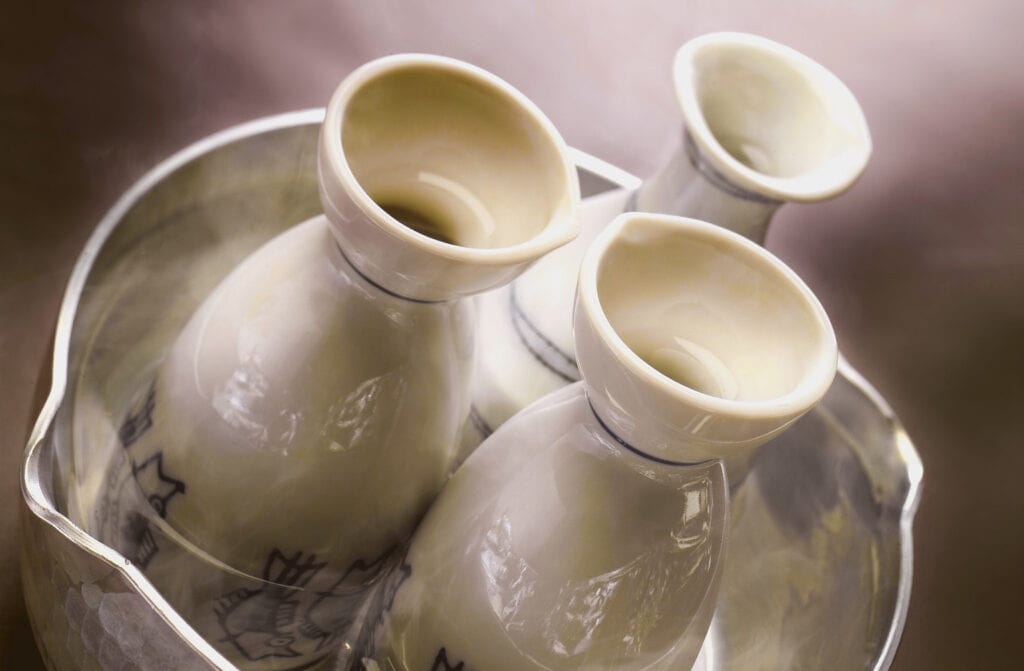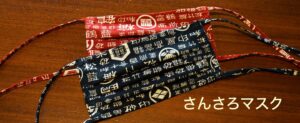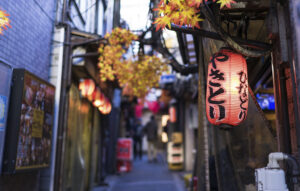The various Japanese sakes are drunk over a wide range of temperatures, from 5°C to around 55°C. The recommended drinking temperature for a sake depends on the Sake category (e.g. Futsūshu, Ginjō or Daiginjō), the time of year and, of course, personal preferences.
Outside of Japan, many people have the idea that sake must be served warmed. However, some sakés develop their aroma best when warmed and some when cooled. The best temperature can vary not only by category, but also down to the individual sake.
Heated sake about thousand years tradition in Japan
Historically, it is said that the nobles in the Heian period (794 - 1185) had the habit of drinking kan sake (燗酒, pronounced Kanzake, the "s" becomes a soft "z" in the compound). Hot sake has thus existed in Japan for at least a thousand years. During the Edo period (1603 - 1868), it also became common for the wider population to drink sake heated.
This brought about innovations of sake utensils, such as "kan-nabe" (燗鍋) - a pot that can be placed directly on the open fire - and "kan-tokkuri" (燗徳利, pronounced kan-dokkuri or kan-dokuri) - in which a sake bottle of 1 or 2 "gō" (合) can be heated in hot water (1 gō = 180 ml). It was during this period that sake culture began to flourish in Japan.
At least until the 1950s, when refrigerators began to become common in Japan, it was customary to drink sake primarily heated or warmed.
What does heating do to the sake?
In general, warmed sake enhances and amplifies the inherent sweetness and umami of the rice. The flavor is softened somewhat more than at (lower) room temperature. Reasons for this lie in the chemical reactions of lactic acid and succinic acid.
Heating sake (Japanese: Kan) is thus one of the ways to enjoy with the palate five basic sake flavors: sweetness, sourness, dryness, bitterness and astringency.
Premium sake are often drunk chilled
Nowadays, however, the vast majority of high-quality sake tends to be drunk chilled. This also has to do with the fact that in modern times, due to refined production methods and the love of fine sake, there are more aromatically accentuated Daiginjō and Junmai Daiginjō sake than in the past.
The following temperature ranges are particularly recommended Hana-hie and Suzu-hie (see below).
Ultimately, however, the type of sake, the season or climate, and personal preferences should determine whether or not sake is enjoyed warmed.
Personal preferences and season play a role
While a warm cup Junmai sake can be very pleasant on a cold day is a well chilled glass of Namazake possibly just the right drink for a warm summer day.
What are the temperature levels for sake?
Here is an overview of the Japanese temperature levels for sake with their respective Japanese names.
As you'll quickly see, the Japanese have wonderfully lyrical names for even the sober numbers of sake-drinking temperatures.
5°C Yuki-hie (雪冷え) cold like snow
"Yuki" (雪) equals snow and "hie" (冷え) stands for the word cold. By the way, Yuki-hie is pronounced "Yuki-bie" because in Japanese, when two words are combined into one word, the clear sound at the beginning of the trailing word is converted into a sound. So Yukie-hie means something like "sake that is as cold as snow" - that is, a little colder than a normal refrigerator.
This temperature is most suitable if you want to enjoy a clean, dry taste. This is the perfect temperature for an aperitif on a summer day or a sparkling sake.
However, at the drinking temperature Yuki-hie, the aroma is less pronounced and the flavor is more closed, so it can feel a bit harsher. The low temperature also means that sweetness and umami are less pronounced.
10°C Hana-hie (花冷え) - cool like the flower in springtime
"Hana-hie" literally means "cool as a flower." However, the term actually refers to the return of cold weather and the cooling off around springtime, when cherry blossoms begin to bloom in Japan. This is exactly the time when the winter, which is often also very cold in Japan, says goodbye and the Japanese soul looks forward to hanami, the celebration of cherry blossoms.
Hana-hie is a very lyrical term also used in haiku (俳句, typical Japanese poem form) as a seasonal term.
The approximate temperature of 10°C corresponds to when the product has just been taken out of the refrigerator after being chilled for several hours. As soon as you touch the bottle, you can feel quite clearly that it is chilled.
This temperature is recommended if you want to drink a dry or acidic sake with a crisp, fresh taste.
For example, the temperature range Hana-hie (~10° C) is well suited for the Sake category Honjōzō or even to enjoy very sweet varieties of sake.
This temperature is especially suitable if you want to enjoy a clean, dry taste. This is the perfect temperature for an aperitif on a summer day or a Sparkling sake.
However, at the drinking temperature Yuki-hie, the aroma is less pronounced and the flavor is more closed, so it can feel a bit harsher. The low temperature also means that sweetness and umami are less pronounced.
15°C Suzu-hie (涼冷え) - pleasantly cool
"Suzu" (涼) comes from the Japanese adjective "suzushii" (涼しい). The word "suzushii" means something like pleasantly cool, "hie" becomes "bie" again when combined with "suzu", making it "suzubie".
The approximate temperature of 15°C is some time after the bottle is removed from the refrigerator. This is the time when the first drops of water appear on the bottle.
This temperature is suitable for fruity sake varieties with a wonderful aroma, such as. Ginjō and Daiginjō.
The sweet, floral aroma rises moderately and gives a pleasant feeling. This temperature is also suitable for Fresh Namazake suitable. You can enjoy its fresh aroma and lively flavor.
20°C Jō-on (常温) or Hiya (冷や) - room temperature
Jō-on means room temperature. In Europe, the room temperature is usually 18°C , but apparently in Japan the room temperature is slightly higher.
"Hiya" is another word that is also used for sake at room temperature. Because the word "Hiya" is associated with the word "Hiyasu" (cool in German), many people - even in Japan - mistakenly understand Hiya to mean chilled sake. However, Hiya is a term used when the sake is served at room temperature.
When sake is drunk at the Jō-on/Hiya temperature (~20°C), the flavors that were hidden at colder temperatures unfold and the taste on the palate softens. This is also the temperature at which the original flavor of a single sake can best be perceived.
30°C Hinata-kan (日向燗) - warm like a place in the sun
"Hinata" (日向) means something like a sunny place and "Kan" (燗) means to warm.
This temperature corresponds to a pleasant warmth, like lying in the sun. At this temperature, it feels neither particularly hot nor particularly cold on the palate. The aroma of the sake is even more pronounced than at room temperature.
For example, if you want to use a delicate type of sake like Ginjō would like to warm up, you could first try the temperature Hinata-kan (~30°C).
35°C Hitohada-kan (人肌燗) - warm as the skin
40°C Nuru-kan (ぬる燗)
"Nuru" (ぬる) comes from the Japanese adjective "nurui" (ぬるい), which means lukewarm. At this temperature, the tokkuri (ceramic carafe) feels only slightly warm when you hold it in your hand.
At lukewarm temperatures, the aromas become more fragrant and the taste more full-bodied. Ginjō and Daiginjō are usually drunk slightly chilled, but some are delicious warmed up. If you want to drink them warm, this is the highest temperature range to which Ginjō or Daiginjō sake should be warmed.
45°C Jō-kan (上燗) - upper limit of lukewarmness
Jō" (上) means "upper", that is, above the lukewarm temperature. At this temperature, you feel a distinct warmth when you touch the tokkuri, and steam is produced when you pour. The aroma of the sake is slightly tighter.
This is the for Junmai sake suitable temperature range.
50°C Atsu-kan (熱燗) - hot sake for dry, sharp taste.
"Atsu" comes from the Japanese adjective "atsui" (熱い), which means hot. Typical exclamation when you touch something in Japan that feels hot or too hot!
At this temperature, steam rises from the tokkuri and it feels hot in the hand. The aroma of the sake becomes sharper and the taste is drier.
This temperature range is suitable for sake categories Honjōzō and Futsūshu.
From 55°C Tobikiri-kan (飛び切り燗) - extremely hot sake.
The word "tobikiri" (飛び切り) means "extreme". At this temperature, the sake feels quite hot. The aroma of the sake becomes very sharp and the taste is pungently dry.
If you like hot sake, you can heat Honjōzō or Futsūshu to this temperature, but for other types of sake this is not recommended as the flavor balance will change dramatically.
Conclusion: Pay attention to the correct drinking temperature with sake
You see - there are numerous different temperature ranges to which sake can be heated. In Germany, the idea that sake must be drunk hot, that it is a kind of hot rice liquor, had become common for many years, because very hot sake quickly becomes dry and pungent in taste. In fact, the beauty and aroma of sake unfolds over many different temperature ranges. And there is no one perfect range for most sake, but there are several ways to explore the taste of a sake.
However, pay attention especially in "Japanese" restaurants on whether there is a basic knowledge of the temperature ranges in which sake should be offered. Only hot, and here especially too hot, would be a missed opportunity to properly enjoy the variety of sake.
Can any sake be warmed?
Not every sake is suitable to be drunk warmed, as the taste characteristics can change adversely with the increased temperature. But if sake suitable for this purpose is warmed to the right temperature, the existing umami flavor can even be improved compared to cold sake.
How should sake be warmed?
The best and most uniform way to heat sake is in a suitable vessel in a water bath. But it also works, for example, a microwave. The time used depends, of course, on the amount of sake and the temperature you want to achieve.
Warm sake traditionally in a water bath
Heating in a water bath in Japan is done as follows: The sake is heated by means of a Tokkuri ceramic bottle, which is immersed in hot water. This can be boiling water, but heating at around 80°C is somewhat gentler. For Nuru-kan (approx. 40 degrees) a time of approx. 2 1/2 minutes is required, for Atsu-kan (approx. 50 degrees) of approx. 3 minutes.
Moderate heating in a water bath is the best method, as the slow heating mellows the aroma and prevents the alcohol from volatilizing more than necessary.
If you do not have suitable Japanese ceramics, you can also put the sake in a cup or heat-resistant glass in the pot of hot water.
Warm sake in the microwave
In addition, sake can also be heated in a microwave oven.
For 1 gō (180 ml) of sake, heating for about 40 seconds (using a 500W microwave) is sufficient to heat the sake to about 40°C. Heating in the microwave creates a temperature difference between the top and bottom of the tokkuri.
Therefore, heat it for 20 seconds, remove the bottle and shake it gently to equalize the temperature inside.
It is recommended to put it in the microwave again and adjust the temperature until it reaches the desired temperature.
Which sake quality level at which drinking temperature?
Depending on Quality level of sake fundamentally different temperature ranges can be recommended.
Recommended drinking temperature for premium sake such as Ginjō and Daiginjō.
Fragrant premium sake like Ginjō and Daiginjō are best enjoyed slightly chilled, at room temperature or slightly warmed.
However, while heating these delicate types of sake leads to the spread of pleasant flavors, the first impression of overheated Ginjō and Daiginjō leads to an over-dominant nose, and after some time the sake loses its best flavor characteristics.
In general, therefore, Daiginjō and Ginjō sake should not be warmed, but there are exceptions to this rule, including some sake that taste good when warmed.
Without getting too attached to categories, the fun of sake is experimenting to find the temperature you think is best, or tasting with the same sake at different temperatures.
However, sake of the Ginjō class should not be heated above 40°C.
Recommended drinking temperature for Namazake
Namazake and Nama-chozō are "fresh" sakes that are best served chilled or on ice. Since these do not undergo the pasteurization process common to other sakés, heating can result in an unpleasant yeasty odor. Hence the strong recommendation to enjoy these types of sake at low temperatures - also to bring out their freshest, fruitiest sides.
Recommended drinking temperature for sake of the category Junmai, Honjōzō and Futsūshu.
Categories sake Junmai, Honjōzō and Futsūshu are the most versatile and can be served at any temperature between well chilled and well warmed. However, special care must be taken to avoid overheating. At temperatures above 55° C, the finer flavors become indistinguishable and the sake takes on an overly strong alcohol odor.







